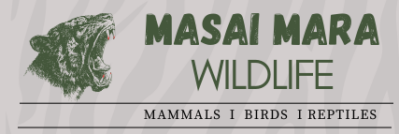- Common Names: Plains Zebra
- Scientific Name: Equus quagga
- Swahili Name: Punda milia
- Maasai Name: Oloitiko
- Size:
- Head-Body Length (HBT): 3m (118 in)
- Shoulder Height (SH): 1.4m (55 in)
- Gestation: 52–56 weeks
Recognition and Appearance
The Plains Zebra is an unmistakable species, known for its iconic black-and-white stripes. These stripes are not just for show; they provide camouflage, dazzle predators, and regulate body temperature. Zebras possess excellent eyesight, hearing, and smell, which help them avoid predators. Their stripes also serve as a form of identification, with each zebra’s stripe pattern being unique, much like human fingerprints.
Habits and Behavior
Zebras are highly sociable and gregarious animals, often mixing with other species such as wildebeest. They adopt a safety-in-numbers strategy and form family units known as harems, led by a dominant stallion who protects his mares and foals. Bachelor males form separate groups until they are old enough to challenge for a harem.
They are active both day and night, frequently seen grazing and enjoying dust baths. Zebras communicate through various vocalizations and body language. For example:
- Neck outstretched: Greeting
- Ears forward: Fear or concern
- Ears back: Anger or aggression
- Braying: Danger or warning signal
Diet
Zebras primarily feed on grasses but are also known to consume other types of vegetation when necessary. As pioneer grazers, they often eat the taller grasses, making way for other species like wildebeest and gazelle that prefer shorter grasses.
Where to Find
Plains Zebras thrive in grasslands and savannas, particularly in areas with open plains. In the Serengeti-Mara ecosystem, they are migratory, often leading the Great Migration in search of fresh grazing grounds.
Predators and Defense Mechanisms
Lions and hyenas are the primary predators of zebras. When threatened, zebras often rely on their speed and agility to outrun predators. Should a predator get too close, a zebra can deliver a powerful rear kick, potentially injuring or even killing its attacker. Their safety-in-numbers strategy, along with their acute senses, helps them avoid danger.
Unique Stripes: More Than Just Beauty
One of the most frequently asked questions about zebras is whether they are black with white stripes or white with black stripes. Most experts agree that zebras are black with white stripes, as they have black skin underneath their coats. However, some research suggests they develop white stripes in utero, leaving the true answer somewhat ambiguous.
The purpose of these stripes has long been debated, with several possible explanations:
- Camouflage: Helps them blend into the tall grass, particularly when hunted by color-blind predators like lions.
- Dazzling Effect: When running in herds, the moving stripes may confuse predators, making it difficult for them to single out an individual.
- Thermoregulation: The alternating black and white stripes may help regulate body temperature, with the black stripes absorbing heat and the white stripes reflecting it.
IUCN Conservation Status
- Status: Near Threatened The Plains Zebra faces threats from habitat loss, hunting, and competition with livestock. While their numbers in the Serengeti-Mara ecosystem remain stable, human encroachment and illegal hunting have led to population declines in other parts of Africa. Conservation efforts focus on protecting their habitats and ensuring sustainable populations in the wild.
Zebras, with their unique appearance and behavior, are a quintessential part of the Masai Mara ecosystem. Observing these beautiful animals in their natural environment provides an unforgettable experience for safari-goers, as they play a critical role in the grassland ecosystem and the Great Migration.
